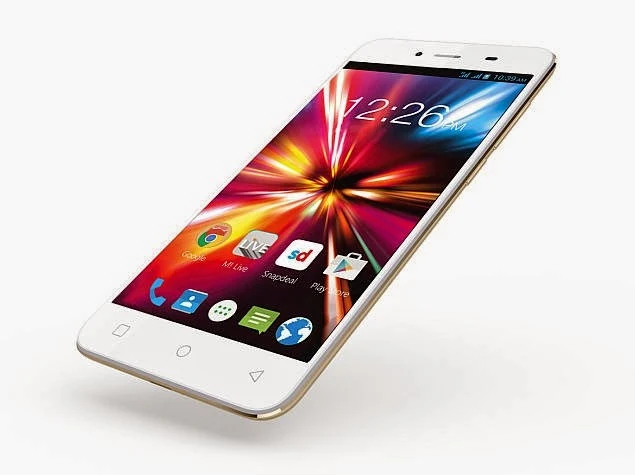Recently when Google Released Their New Android Version 5.0 Lollipop it became very popular in the market due to its new features and mind blowing animations.Now A Days Every One is looking for an android Lollipop phone with good price so here is the phone Launched By Micromax The One And Only Micromax Canvas Spark.
So Lets Talk About Some Of Its Specifications-
This Phone has been priced at Rs 4,999 only, this phone is a dual sim phone running on android latest Os Lollipop with 4.7 Inch qhd(540x960 pixels) IPS display with Gorilla Glass 3 which will give it more toughness then other phones. This Phone is powered by a super fast 1.3 GHz quad core processor with 1Gb DDR3 ram which will give it a boosting performance.
The Canvas Spark has an 8-megapixel rear camera with LED flash and an M8 Largan lens, and a 2-megapixel front-facing camera. It sports 8GB of built-in storage, which is expandable via microSD card (up to 32GB). Connectivity options include Wi-Fi 802.11 b/g/n, Bluetooth 4.0, GPS, FM radio, and a 3.5mm audio jack. It is powered by a 2000mAh battery that's rated to deliver up to 335 hours of standby time. The smartphone comes in dual-tone color options - White-Gold and Grey-Silver.
Review By Editor-
Design- 9/10
Display- 7/10
Performance- 8/10
Camera- 7/10
Cost- 10/10
Specifications Of This Phone-
GENERAL
Alternate names Q380
Release date April 2015
Form factor Touchscreen
Weight (g) 134.00
Battery capacity (mAh) 2000
Removable battery No
Colours White-Gold, Grey-Silver
SAR value NA
DISPLAY
Screen size (inches) 4.70
Touchscreen Yes
Touchscreen type Capacitive
Resolution 540x960 pixels
Colours 16M
HARDWARE
Processor 1.3GHz quad-core
Processor make MediaTek MT6582M
RAM 1GB
Internal storage 8GB
Expandable storage Yes
Expandable storage type microSD
Expandable storage up to (GB) 32
CAMERA
Rear camera 8-megapixel
Flash Yes
Front camera 2-megapixel
SOFTWARE
Operating System Android 5.0
Java support Yes
Browser HTML
CONNECTIVITY
Wi-Fi Yes
Wi-Fi standards supported 802.11 b/ g/ n
GPS Yes
Bluetooth Yes, v 4.00
NFC No
Infrared No
DLNA No
Wi-Fi Direct No
MHL Out No
HDMI No
Headphones 3.5mm
FM No
USB Micro-USB
Charging via Micro-USB Yes
Proprietary charging connector No
Proprietary data connector No
Number of SIMs 2
SIM 1
GSM/ CDMA GSM
3G Yes
SIM 2
GSM/ CDMA GSM
3G No
SENSORS
Compass/ Magnetometer No
Proximity sensor Yes
Accelerometer Yes
Ambient light sensor Yes
Gyroscope No
Barometer No
Temperature sensor No

Comments
Post a Comment